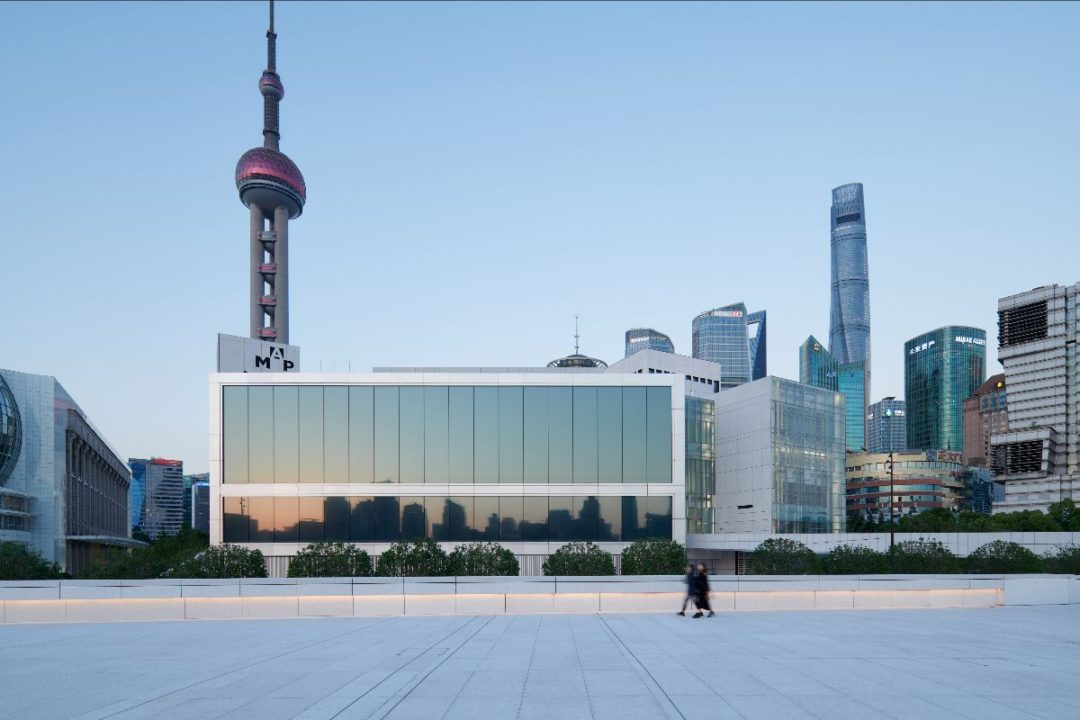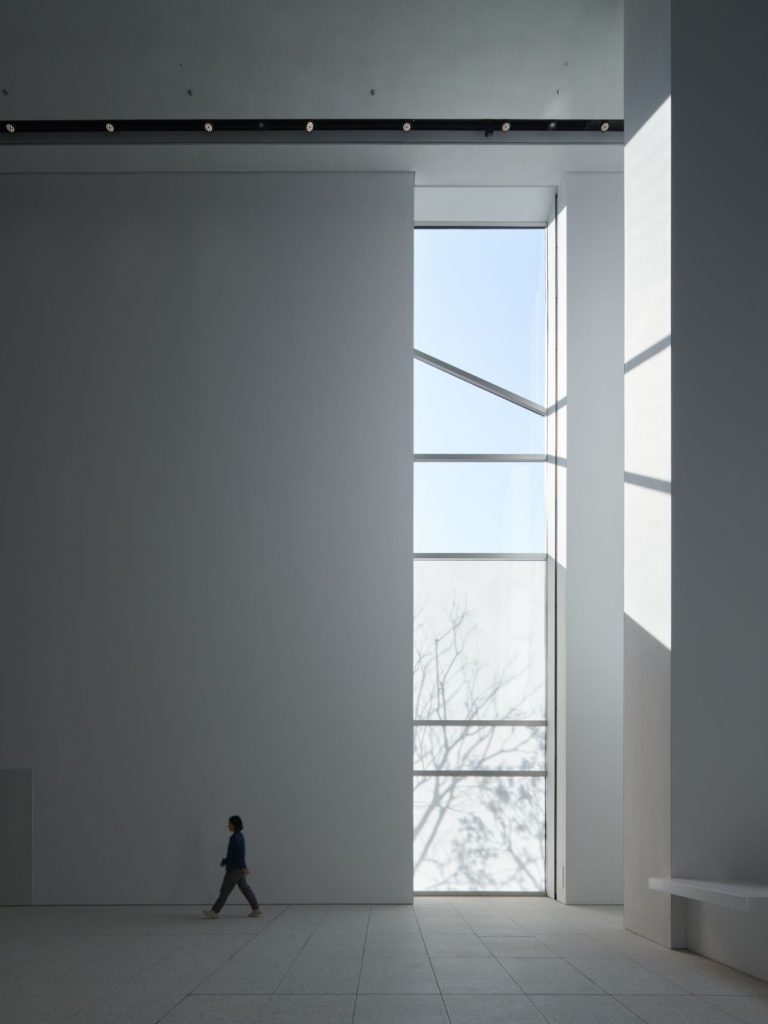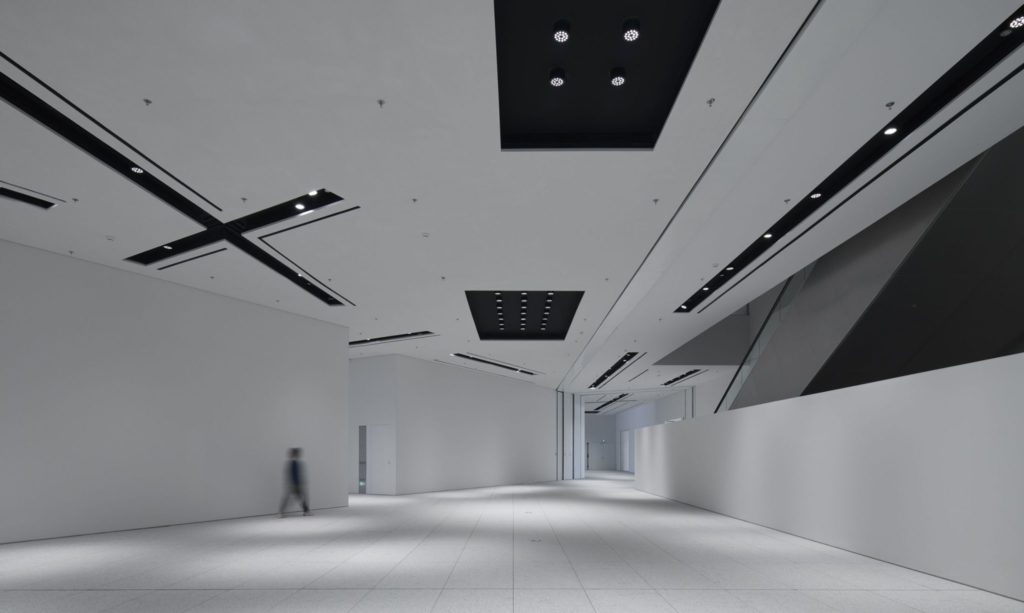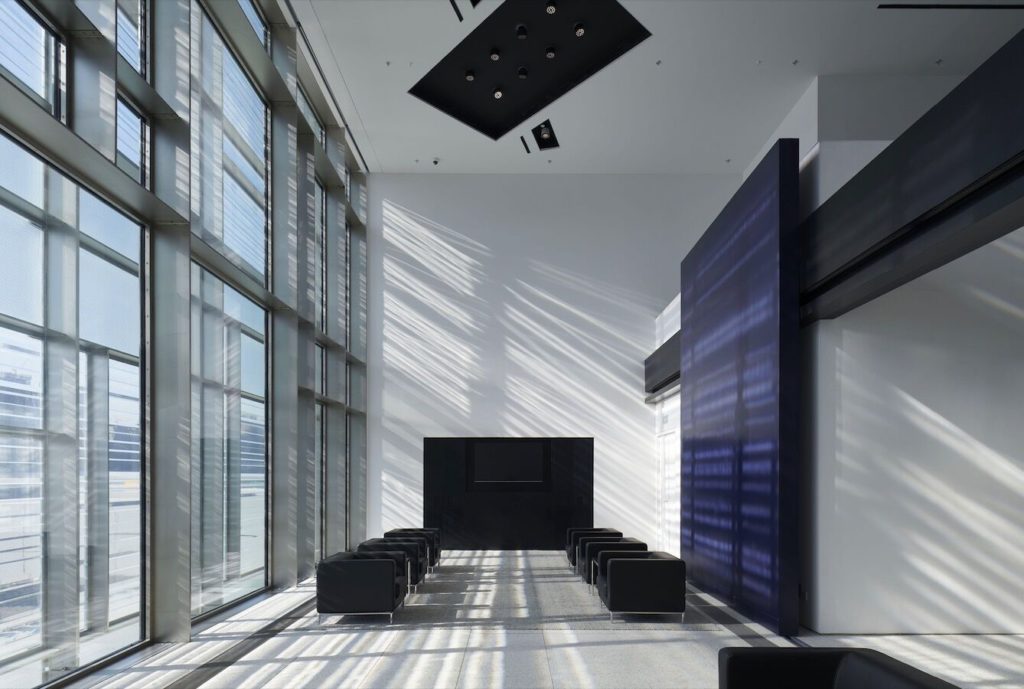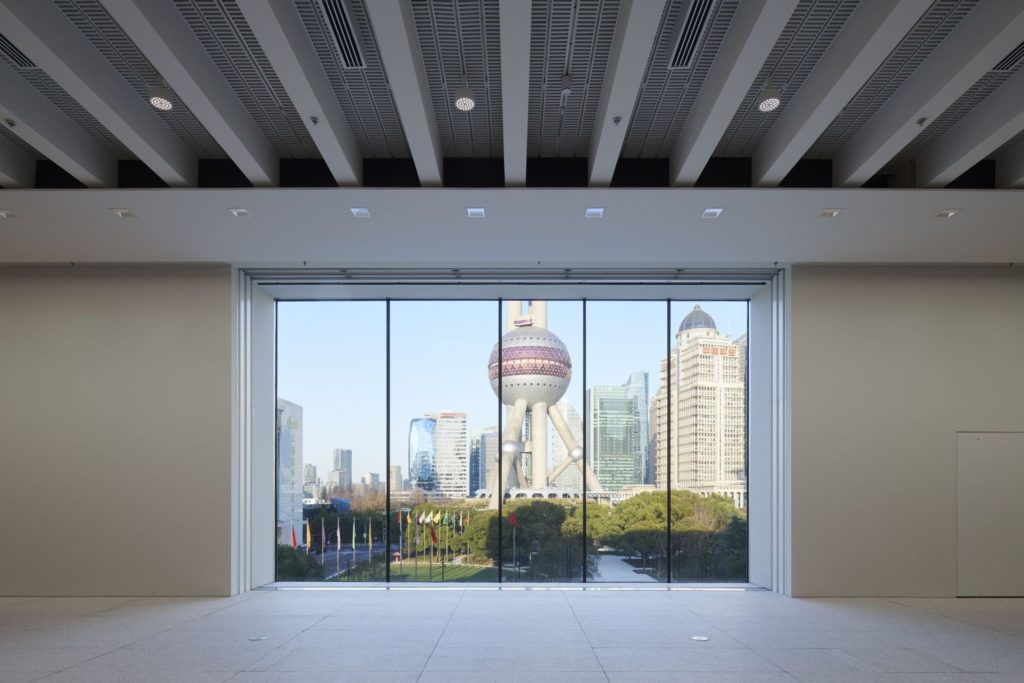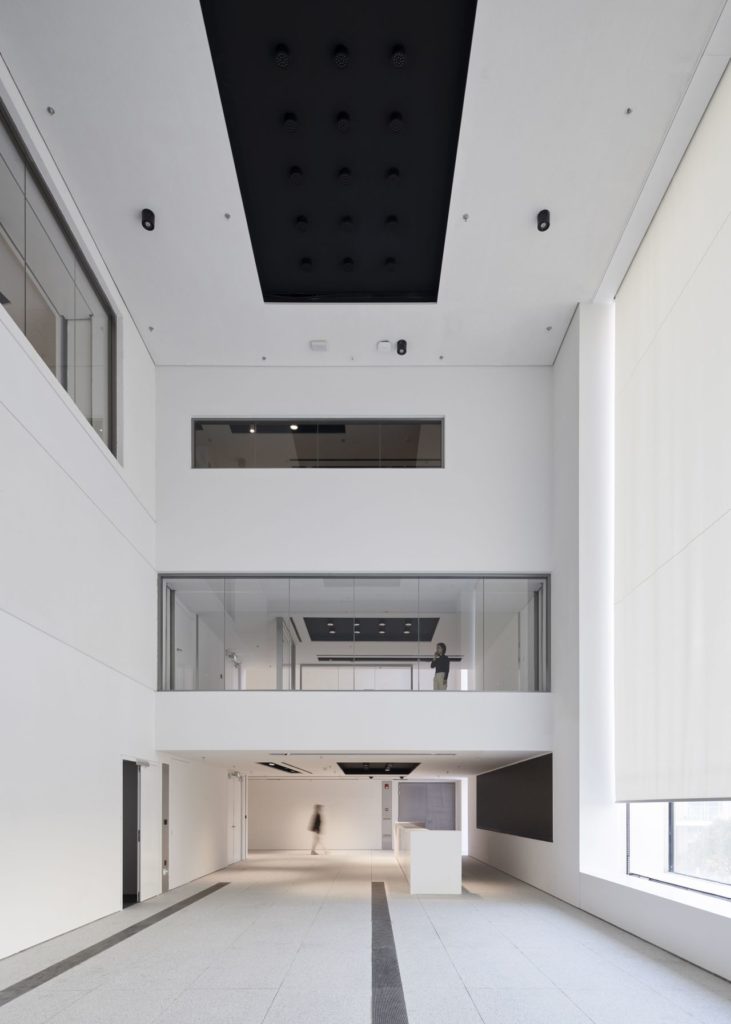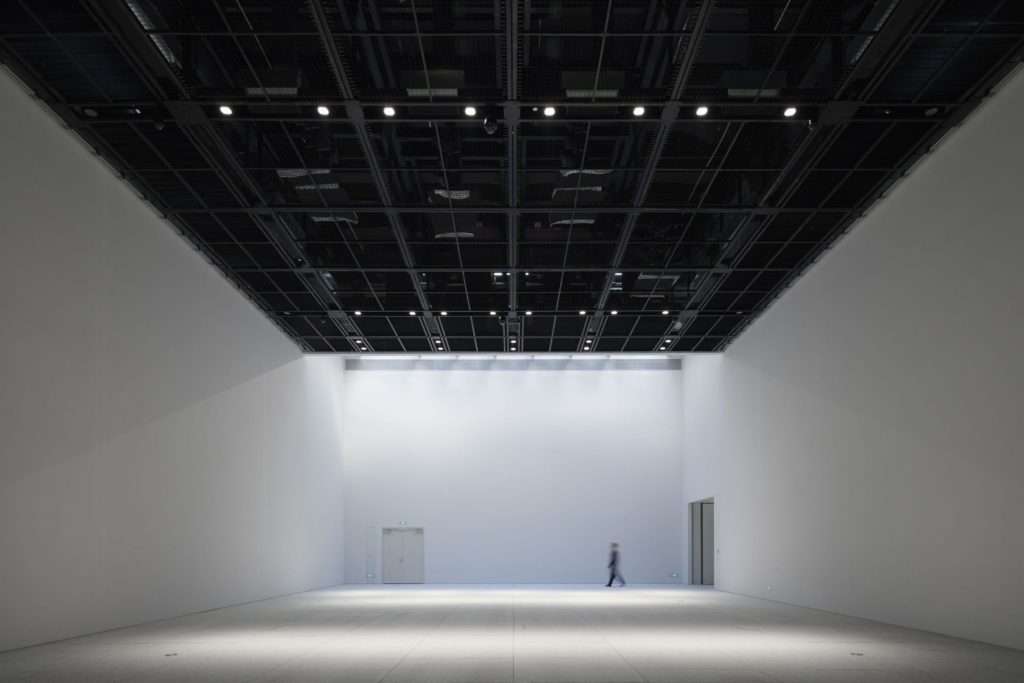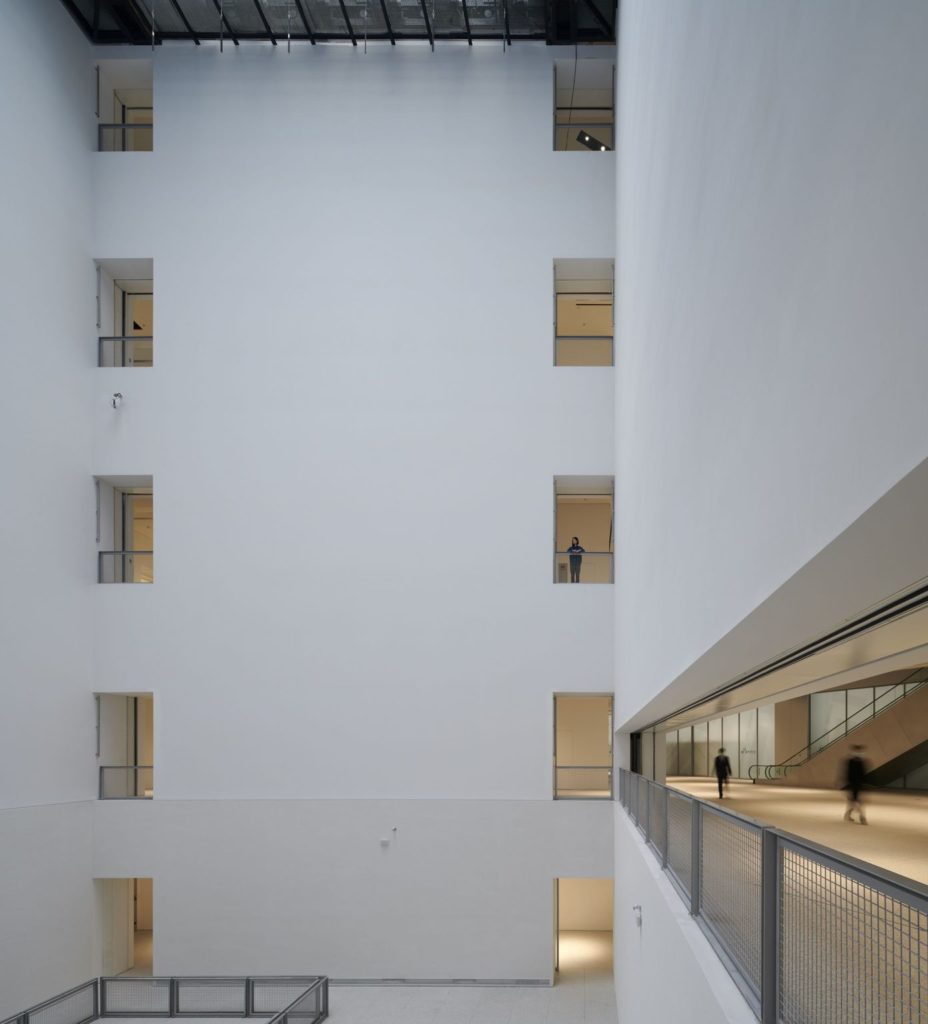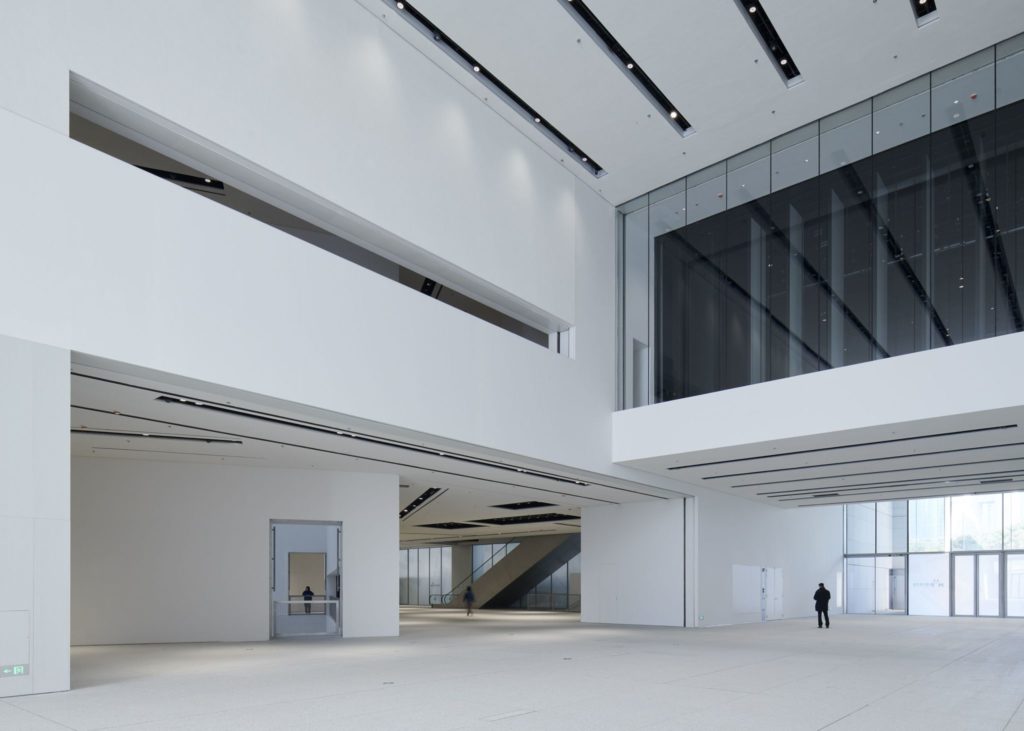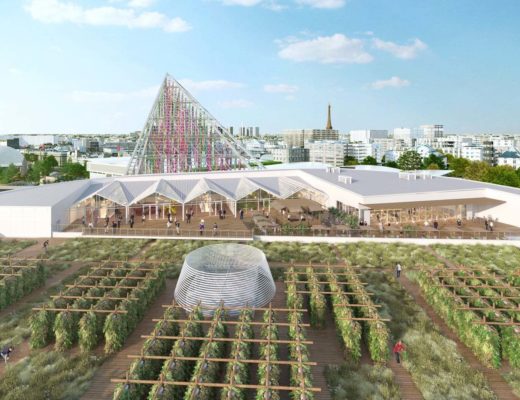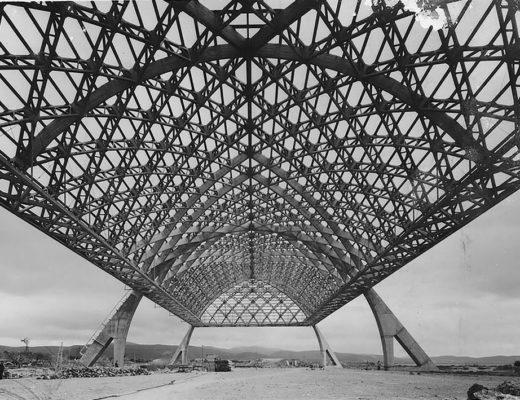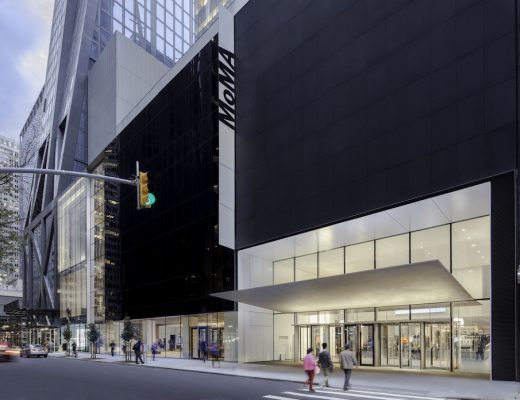Shanghai’s latest cultural offering, the Museum of Art Pudong, consists of four hectares of warm white granite stones assembled in a way that conjures up the irregular pattern of ‘crackled glass’. The structure is bordered in the west by water, the Huangpu River.
The building drops straight down to the water, with the stone appearing to be whiter at that level. In its white sheerness, towering over the water, the domain creates a restaurant loggia as close as possible to the boats for people to be able to further admire the Bund.
The domain is bordered, surrounded by tall trees that form an undulating landscape and a huge rim, a huge windbreak. It is separated from the neighbouring towers by this windbreak of trees, which creates a thick dark frame that brings out the bright airiness of the museum.

The undulating landscape, with its large surrounding rim, is a vast V-shaped linear garden approximately 700m long showcasing trees (some of them removed from the clutches of the new museum) – tall trees of different species.
In the landscape there will be statues and, at the back of the landscape, lights that change from day to night. The museum will feature works such as statues and contemporary artworks in the wooded landscape, and artworks on the stone (‘crackled glass’) field, on the forecourt, on the terrace and on the waterfront walkway.
The forecourt and terraces will have plinths of the same texture as well as tree planters. The museum will be flamed over the floor (slight non-slip relief) and mixed on the walls (smooth or flamed or very occasionally roughened). The stones are essentially large different-size panels with a raindrop pattern.
The sharps points of the triangles will be lined with metal. The ‘crackled glass’ medium will stop at the museum doors. The windows of the exhibition rooms will be able to be shuttered if necessary using standing panels. The open windows will be hung with a fine sail to filter the light and create a fixed shade.

The rooms on the top floor and the exhibition space in the atrium will be lit with natural overhead lighting provided by micro sheds. The screens mark out the domain. The two vertical screen signs, one above the museum and one on top of the ventilation tower, mark off the site and indicate and highlight a break.
The two screens are linked at night by laser beams creating intersecting lines of light above the museum. The western side screen on the Bund will be a twin façade of textured glass watermarked with the ‘crackled glass’ pattern over two superimposed floors. It will also provide a canvas for image artists and installation artists, especially for Chinese artists who like large dimensions.

The western side screen seen from the Bund will impose its presence through its various shades of white: The white of the sail between the two façades, a finely patterned sail that gently texturizes the landscape to make it easier for people to seize; a total or partial white that provides an unobstructed view over the first two or three metres. The western side screen on the Bund side, starting at the walkway, is an actual vision of the “Grand Verre”.
For its inaugural program, the museum will present three major exhibitions: Light: Works from Tate’s Collection; Joan Miro. Women, Birds, Stars; Cai Guo-Qiang: Odyssey and Homecoming.
Photographs: Chen Hao; courtesy: Ateliers Jean Nouvel
PROJECT DETAILS
- Client: Shanghai Lujiazui Development (Group) Company Limited
- Types of assignment: Competition, Full mission, Interior design
- Programme: Museum of Modern art: Temporary exhibitions, auditorium, education department & Café, restaurant, retails, conferences & public spaces
- Habitable area: 54,000 m²
- Team: Jean Nouvel – Ateliers Jean Nouvel
- Studio Manager: Stefan Zopp (Studies), Mathieu Forest (Competition)
- Assisting architect to Jean Nouvel: Aurélien Coulanges (Studies)
- Project Manager: Isabelle Agostini (Competition phase 1), Chen Chen (Competition phase 1, 2, 3, Schematic Design & Design development), Stacy Eisenberg (Competition phase 1, 2 & 3), Damien Faraut (Design development & Construction), Florence Rabiet (Competition phase 3, Schematic Design)
- Competition phase 1 & 2: Philippe Charpoiot, Seung Paik, Florence Rabiet, Chiara Violi
- Competition phase 3: Alexander Buckeridge, Tian Li, Seung Paik, Anna Philippou, Maria Velaora
- Schematic Design / Design Development: Cécile Armandes, Giulia Felici, Urszula Milliez-Tyszkiewicz, Julie Moreau, Miguel Reyes, Seung Paik, Yupeng Wang, Wu Zheng, Yuanqing Zhou
- Interior Design: Sabrina Letourneur, Tanguy Nguyen
- Landscape: Yinan Du, David Euvrard, Isabelle Guillauic
- 3D Modelling Narjis Lemrini, Jose Milan, Toshihiro Kubota, Jigen
- Graphic design: Marie Maillard, Eugénie Robert, Vatsana Takham, Élise Taponier
- Model: Romain Caillon, Rui Pereira
- Architects of record: TJAD Shanghai – Tongji Architectural Design (Group) Co., LTD
- Engineering: BIAD (Cost Consultant, competition), Thornton Tomasetti – TJAD (Structure), Dress and Sommer – TJAD (Building services, Heating, Ventilation & Air-Conditioning, Sanitary facilities), RFR Facades Shanghai (Facades), Agence TER (City planning)
CONSULTANTS
- L’Observatoire International – Hervé Descottes (Lightning design), Hans-Ulrich Obrist (Museography), dUCKS scéno (Scenography), Ingénieurs Et Paysages (Landscape), Federico Cruz-Barney – Studio DAP – Federico Cruz-Barney (Acoustics)
You might also like:

